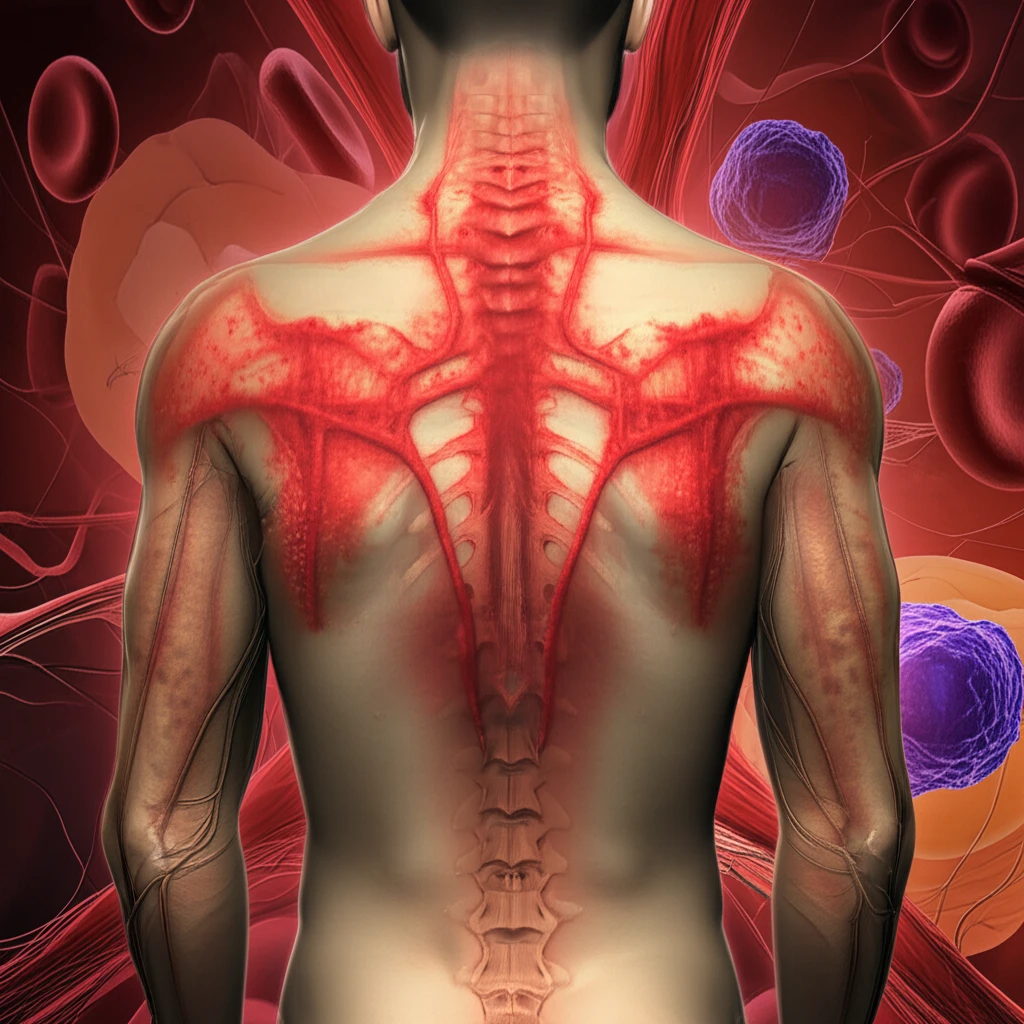
Decoding Ofuji's Papuloerythroderma: When Skin Reveals a Deeper Story
"Unveiling the link between a rare skin condition and myelodysplastic syndrome, and what it means for early diagnosis and treatment."
Papuloerythroderma of Ofuji (PEO) is a rare skin condition characterized by red-brown papules that merge into widespread redness, notably sparing skin folds – a telltale sign known as the 'deck-chair sign.' While PEO has been linked to various triggers, including medications, infections, and even malignancy, its association with underlying conditions makes early recognition critical.
Malignancy, in particular, has been observed in a significant proportion of PEO patients, underscoring the importance of considering this possibility when diagnosing the condition. Recognizing PEO as a potential paraneoplastic phenomenon – where the skin condition signals an underlying cancer – can lead to earlier detection and potentially better outcomes.
This article explores a case of PEO associated with myelodysplastic syndrome, a type of blood cancer, highlighting the diagnostic challenges and the importance of recognizing this rare dermatosis as a potential indicator of more serious health issues. Understanding the subtle clues our skin provides can be life-saving.
The Case: When a Rash Signaled a Blood Disorder

Consider the case of a 77-year-old Chinese man with a history of hypertension, who presented with an 11-month history of an intensely itchy rash. Initially treated for asteatotic eczema with topical steroids, his condition only worsened. This case highlights how PEO can mimic other skin conditions, delaying accurate diagnosis.
- Leukopenia and abnormal cells: Blood tests showed low white blood cell counts and unusual cells.
- Bone marrow confirmation: A bone marrow evaluation confirmed myelodysplastic syndrome.
- Cytogenetic abnormality: The patient had a monosomy-7 cytogenetic abnormality, indicative of a poor prognosis.
PEO: More Than Just Skin Deep
While the exact cause of PEO remains elusive, research suggests a link to Th22- and Th2-mediated inflammation. These immune responses can promote both skin cell proliferation and, potentially, tumor growth. This connection underscores the complexity of PEO and the need for a comprehensive diagnostic approach.
Diagnosis of PEO can be challenging, with a median duration of 7 months from onset to diagnosis. Diagnostic criteria include the characteristic skin findings (flat-topped papules, erythroderma, sparing of skin folds), itchiness, and exclusion of other skin diseases. Recognizing these key features is the first step toward identifying potential underlying conditions.
PEO serves as a reminder that skin conditions can be a window into overall health. Recognizing PEO and its potential association with malignancy can lead to earlier diagnosis and intervention, potentially improving outcomes for those affected. If you notice unexplained skin changes, especially those resembling PEO, seeking prompt medical attention is crucial.
